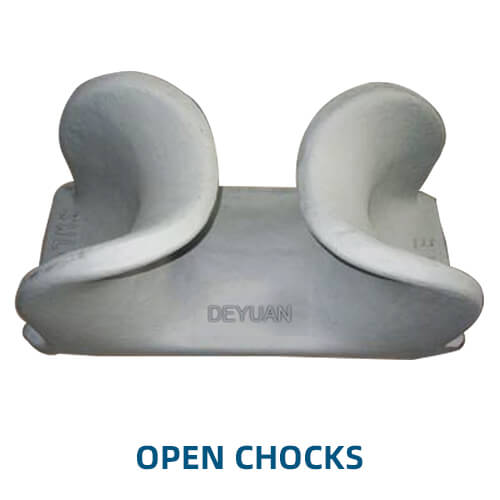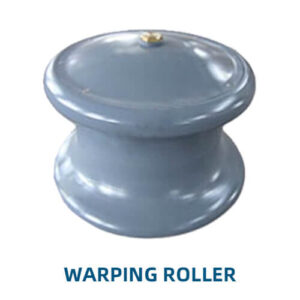Key Features of Open Chocks:
- Design and Construction:
- Shape: Open chocks typically have a U-shaped or channel-like profile with an open top, allowing lines to pass through easily. The open design provides direct access to the line for quick adjustments.
- Material: Made from durable materials such as cast iron, steel, or stainless steel, chosen for their strength and resistance to marine conditions.
- Mounting: Usually bolted or welded onto a dock, pier, or ship. The base is designed for secure attachment and stability.
- Types:
- Fixed Open Chocks: Permanently installed on a dock, pier, or ship. They provide a stationary point for guiding and managing mooring lines.
- Adjustable Open Chocks: Designed to be adjustable in position or orientation, allowing for flexibility in guiding lines based on operational needs.
- Applications:
- Dock and Pier Mooring: Used to guide mooring lines during vessel docking and berthing. The open design allows for quick and easy attachment or adjustment of lines.
- Shipboard Operations: Installed on ships to manage lines such as anchor chains, mooring lines, and cargo handling ropes, facilitating smooth operation and adjustments.
- Marine and Offshore Platforms: Employed on floating platforms, oil rigs, and other offshore structures to guide the movement of cables and lines.
- Performance and Benefits:
- Ease of Use: The open design allows for quick access and adjustments to mooring lines, making it easier to manage and secure vessels.
- Versatility: Can accommodate various line sizes and types, providing flexibility in line management.
- Durability: Constructed from robust materials to withstand harsh marine environments, including exposure to saltwater, UV rays, and physical wear.
- Maintenance and Care:
- Inspection: Regularly inspect open chocks for signs of wear, corrosion, or damage. Ensure that the mounting hardware and connection points are secure.
- Cleaning: Clean the chocks to remove marine growth, debris, and contaminants. Use appropriate cleaning agents to avoid damaging the material.
- Repairs: Address any damage or issues promptly to maintain functionality and safety. This may involve repairing or replacing damaged components.
- Safety Considerations:
- Load Capacity: Ensure that the open chocks are rated for the specific loads and types of lines being used. Overloading can cause damage or failure.
- Proper Installation: Ensure that the chocks are securely mounted and positioned to provide effective guidance and support for mooring lines.
- Line Management: Use appropriate line sizes and types for the open chocks to ensure proper fit and performance. Avoid overloading individual lines or components.
Advantages of Open Chocks:
- Quick Access: The open design provides easy access for attaching, adjusting, and managing mooring lines.
- Flexibility: Can handle various line sizes and types, making them versatile for different applications.
- Durability: Built to withstand harsh marine conditions and heavy loads, ensuring long-term performance and reliability.
Considerations for Open Chocks:
- Selection: Choose the appropriate size, type, and material based on the specific mooring requirements and the type of lines being used.
- Maintenance: Regularly inspect and maintain the chocks to ensure their continued functionality and safety.
- Compliance: Follow relevant industry standards and regulations for the design, installation, and maintenance of open chocks to ensure safety and performance.
Open chocks are essential for managing mooring lines in various marine settings, offering ease of use, versatility, and durability. Their design facilitates effective line guidance and adjustment, making them valuable components for docking and mooring operations.






